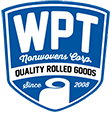Material Optimization
Zero waste manufacturing in the nonwovens industry begins with material optimization. By carefully analyzing raw material usage and process efficiency, manufacturers can minimize waste generation at every stage of production. This includes optimizing fiber blending and processing techniques to maximize yield, as well as implementing cutting-edge technologies such as precision cutting and ultrasonic splicing to minimize material waste during fabrication.Reclaiming Materials
Recycling and reuse play a key role in zero waste manufacturing strategies. Nonwoven manufacturers are increasingly exploring closed-loop systems where production waste is recycled back into the manufacturing process, reducing the waste going to landfills. Additionally, post-consumer recycling initiatives are gaining traction, enabling nonwoven products to be repurposed or recycled at the end of their life cycle.Optimizing Efficiency
Energy efficiency and resource conservation are central to zero waste manufacturing in all sectors, including the nonwovens industry. By investing in energy-efficient machinery, developing strategic production schedules, and implementing process improvements, manufacturers can reduce energy consumption.Your Responsible Source for Nonwovens
Zero waste manufacturing strategies hold tremendous potential for reducing environmental impact and fostering sustainability in the nonwovens industry. As a leading domestic nonwoven fabric manufacturer since 2008, WPT Nonwovens is dedicated to producing quality products and providing uncompromised service, while also being committed to being an environmentally responsible manufacturer. Our goals in meeting these objectives include:
- Leading the Nonwovens Industry in Zero Waste Manufacturing Strategies
- Providing the Highest Quality Nonwovens and Comprehensive Services
- Developing Key Supplier Relationships for a Reliable Supply Chain
- Designing Innovative, Environmentally Responsible, and Sustainable Nonwovens

